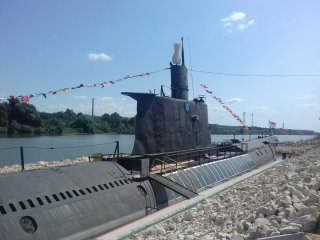Everyone Seems to Have a Russian Romeo-class Submarine
But even as the Soviets abandoned Project 663, the Romeo class found widespread use beyond the USSR’s borders.
Here's What You Need to Remember: China delivered a handful of Romeo submarines to North Korea in the 1970s, whilst also laying the groundwork for Pyongyang’s domestic defense industry to build over a dozen more. Around 22 Romeo submarines are believed to serve in North Korea’s navy today, though at least a handful of these aging vessels are likely not in an operational state.
Conceived as an ill-fated Soviet submarine project in the early years of the Cold War, the Romeo-class line of diesel-electric boats has lived a long service life beyond the Soviet Union.
Project 663, a submarine line known by its NATO reporting name the Romeo class, was proposed and adopted as an advanced development of the prior Whiskey class of diesel-electric attack submarines. As compared with the Whiskey class, the Project 663 was to offer across-the-board performance improvements in operational range, sustained speeds, and diving depth. Romeo’s larger hull allowed more diesel fuel to be stored, boosting its range to an impressive 14,500 kilometers-- its predecessor, which was largely intended for littoral operations, didn’t even have a submerged range of 800 kilometers. Despite displacing at a hefty 1,830 tons submerged as opposed to its predecessor’s much lighter 1,340 tons, the Romeo and Whiskey classes both featured a submerged top speed of roughly thirteen knots. The Romeo class boasted eight standard 533mm torpedo tubes, as compared with the Whiskey’s six.
Of the 56 planned Romeo models, only 20 were completed by the early 1960s. Soviet observers found the Project 663 submarines’ diesel engines to be a major performance liability; further still, the batteries were unreliable, the construction was prone to serious oil leaks, and the onboard torpedoes were derivatives of wartime or early postwar designs. The Kremlin decided to cut its losses, devoting its resources instead to nuclear-powered submarines.
But even as the Soviets abandoned Project 663, the Romeo class found widespread use beyond the USSR’s borders.
As part of ongoing Soviet technology transfers to China under the 1950 Sino-Soviet Friendship and Mutual Assistance Treaty, China’s People’s Liberation Army Navy (PLAN) was given the blueprints to produce its own Romeo-class submarines. The Chinese Project 663 variant was initially called the type Type 6633; these boats, of which only a handful was completed, were built entirely from imported Soviet components.
From 1967 onwards, PLAN switched to a domestically produced Romeo derivative called the Type 033. This variant boasted several improvements over the original Project 663, including slight acoustics upgrades and a more robust sonar suite. The ES5A revision and Type 033G variant introduced further improvements still, notably bringing acoustic homing torpedoes and partly computerized systems. As many as 84 Type 033 submarines were built through 1984. All of these have since been retired, with the prolific Type 033 line spawning the improved, domestically produced Type 035 “Ming” class that remains in partial service to the present day.
Remarkably, the Romeo line’s story doesn’t end here. China delivered a handful of Romeo submarines to North Korea in the 1970s, whilst also laying the groundwork for Pyongyang’s domestic defense industry to build over a dozen more. Around 22 Romeo submarines are believed to serve in North Korea’s navy today, though at least a handful of these aging vessels are likely not in an operational state. Some of North Korea’s Romeo submarines have been heavily modified with modern components, as well as potential compatibility with additional weapons types.
Mark Episkopos is the new national security reporter for the National Interest.
This article is being reprinted for reader interest.
Image: Wikimedia Commons

